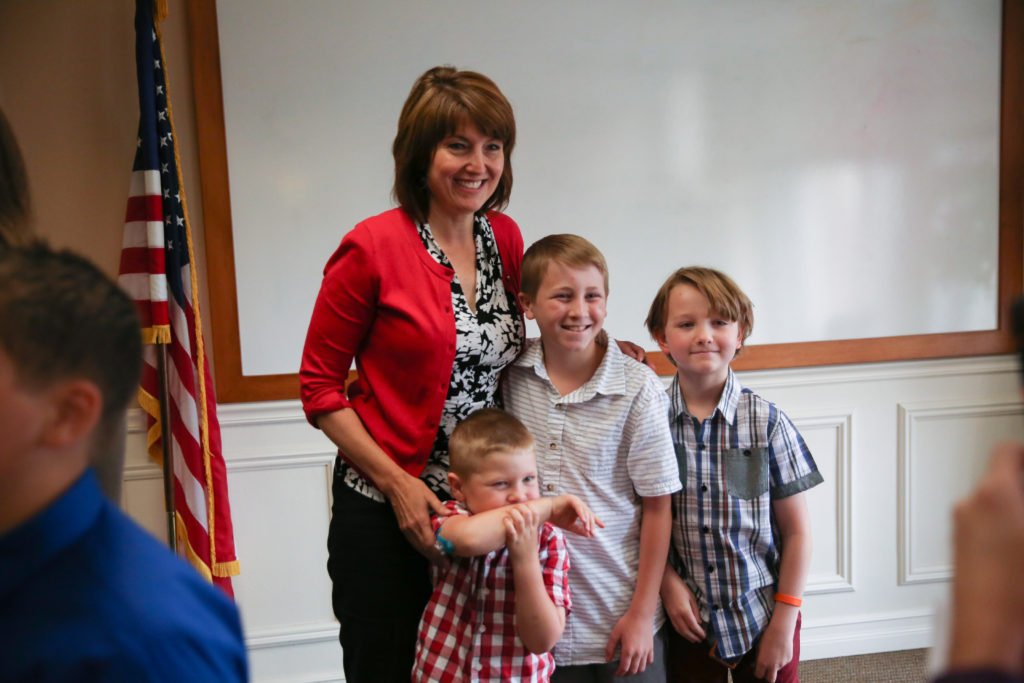#CuresNow Will Save Lives
I love the holidays. The sights, the smells. Seeing how excited my three kids get knowing baby Jesus is coming – and Santa, too! But for so many Americans, this season is one of heartache, knowing it’s the first Thanksgiving or Christmas without their loved one. Or, perhaps the last one they have with them before they lose their battle with an incurable disease.
This week, with 21st Century Cures, the House is working to ensure that for millions of Americans, Christmas once again becomes the season of hope.
For more than a year and a half, under the leadership of Chairman Upton, my colleagues and I on the Energy and Commerce Committee crisscrossed the country listening to experts and patients outline how we can address America’s health care needs and how we can help spur research and innovation.
We listened to them, and as their representatives – their voice – we took action. 21st Century Cures is the result of these conversations. Our goal is not to provide life-long treatment, but to find life-saving cures. This historic, bipartisan legislation is a sign to the American people that we’ve embraced the moonshot. We’re proving to the 14 million cancer patients, the 25 million adults with chronic pain, and the 5 million with Alzheimer’s in the United States that we won’t accept wishful thinking or “maybe next year” anymore. Because for the parents, siblings, and children facing a disease without a cure, there isn’t time for maybes.
For the children I met at the Spokane Juvenile Diabetes Research Foundation, for example, Cures rolls back regulations and gives them access to medical devices – and peace of mind.
There is no shortage of people who would benefit from 21st Century Cures. But I want to take a moment to touch on the unsung heroes of our medical field – the researchers.
Patients are people – they are not their disease. And behind the numbers and the treatments are the men and women who dedicate their lives to scientific discovery. Washington State is home to remarkable health research centers – two major state universities, Juno, the Seattle Cancer Care Alliance, Fred Hutchinson, just to name a few.
At Washington State University, I met with a coalition of researchers who are looking into the epidemic of antibiotic resistant bacteria. This state-wide research team brings the best and the brightest to the table to combat health threats. Meeting with them, and with experts from across the region, has shaped my view on Cures and why it’s so important. They are doing incredible work.
Because for them, it’s personal.
A young researcher in Seattle recently shared with my office her take on 21st Century Cures. She spoke of what she called the “existential crisis” of being a scientist. She dedicated most of her young adult life to studying, and after nearly a decade in college, she graduated from one of the best schools in the country and went on to take a low paying job researching and developing vaccines.
For most people, the thought of being paid so little for working so hard would be a deterrent. But not to this young woman — she said that most scientists can’t imagine doing anything else. This is their passion. This is what they were meant to do. To them, it’s an emotional journey. They don’t take many vacations or live fancy lifestyles. The lack of funding, the insane hours, the public pressure – it’s all worth it. Because it isn’t about praise. It’s about hope. The hope that someone, someday – maybe them – will have a breakthrough that will save people’s lives.
These are hardworking men and women behind the scenes who have sacrificed so much on behalf of so many. Often, they are unsuccessful. Such is the life of a scientist. But they push forward with patients in mind. There is no limitation to the inspiration and drive of our nation’s scientists – just a limit on resources and manpower.
I thank my colleagues for joining me in supporting 21st Century Cures and encourage the Senate to do the same. Let’s personalize medicine to find the best treatments. Let’s make it easier for researchers to work together. Let’s give kids what they need to grow into tomorrow’s doctors and researchers.
Most importantly, let’s save lives.
